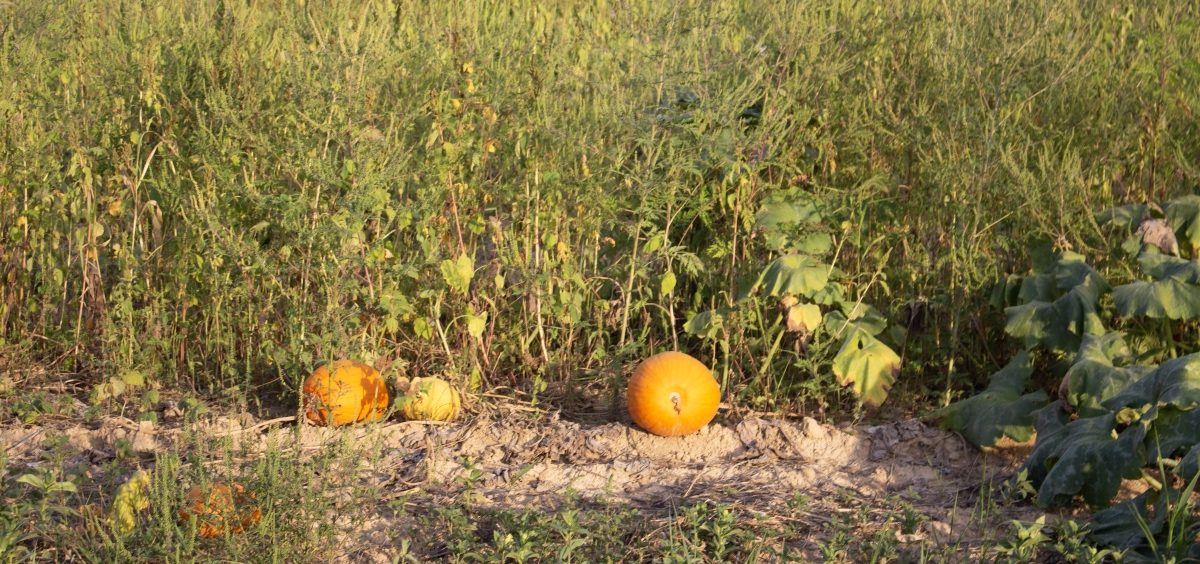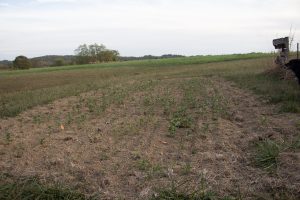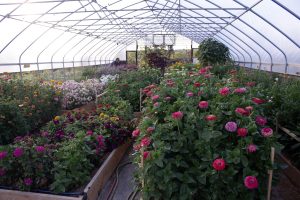News

Libby’s Pumpkin Patch, a popular fall destination in Athens County, won’t open due to drought
By: Theo Peck-Suzuki | Report for America
Posted on:
ALBANY, Ohio (WOUB/Report for America) — For over a decade, southeast Ohio residents have been visiting Libby’s Pumpkin Patch outside Albany for hay rides, corn mazes and, of course, pumpkins.
But not this year.
The drought that has afflicted the region since June has spelled doom for the flowers and pumpkins at Libby’s, prompting the family that owns the farm to close their doors for the season.
“We had good moisture and good rainfall until May, and then just, the spigot got turned off,” said co-owner Kevin Lewis.
Much of Athens County is now in what the U.S. Drought Monitor calls a D4 or “exceptional” drought — the worst category possible. In these conditions, some plants become distressed and bear fruit that are too small and arrive too early. Others simply won’t grow.
“We have planted our sunflowers three times, and we still have nothing,” Lewis said.
Those sunflowers are usually the first thing people see at the pumpkin patch. Now, the only things growing in that field are weeds. The corn didn’t grow, either, meaning no corn maze.
“We thought, we’ll pivot a little bit, and we’ll plant some Egyptian grasses and some sorghum-type products that are fewer days to maturity, so maybe we can still get it (the maze) in,” said Libby’s co-owner Rachel Lewis. “We invested a lot of money in that and that hasn’t grown.”

“So you can imagine (the cost) if you were doing a different type of irrigation on a grander scale,” she said.
The farm has been in Rachel Lewis’ family for six generations — seven if you count her daughter, the eponymous Libby, who is now in college. Rachel said the last time anyone can remember a drought this bad was in 1988.
“What I can remember about it is that it was a pretty significant drought, and all the old-timers then … were comparing it to the Dust Bowl. But the people that remember the ’88 drought now are saying this is much worse than the ’88 drought,” she said. “Mid to late July, we started getting some rain in ’88. But that hasn’t been the case now.”
Libby’s isn’t the only farm that’s hurting. Ty Higgins of the Ohio Farm Bureau said he spoke with a farmer this summer who told him the drought would set his livestock operation back four or five years.
“He had natural springs throughout his farm that he was able to tap into, and those springs, in a typical year, are always full of fresh cold water for his livestock,” Higgins said. “This drought is so severe that one of his wells completely dried up.”
Higgins noted there are emergency programs for farmers impacted by the drought. That might include, for example, a low-interest loan to cover the cost of trucking in water. Commodity crops — things like corn, rice and soybeans — are also protected by crop insurance.
But according to the Lewises, that assistance isn’t much help to niche farms like theirs.

“I’m always trying to think about how the weather’s changed since I was a kid, and … how bad is it gonna be as far as the weather in years to come, and do we need to think about revamping our ponds and thinking about the way we collect water and save water,” she said. “We’ve had the luxury of not having to worry about that too much, but we are definitely gonna have to learn to pivot a little more. And probably not just us. Probably everybody, if they want to grow something.”
With human-caused climate change driving global temperatures up year after year, extreme weather events — both too much rain and not enough — are expected to become increasingly frequent.
For their part, the Lewises are just trying to stay agile.
“We’re always looking at the seed catalogs and the irrigation catalogs and … he’s (Kevin) forever building, he’s out in the shop, building something. Let’s try and see if this works, let’s try and see if that works,” Rachel Lewis said.
And they’re hoping for more rain next year.

